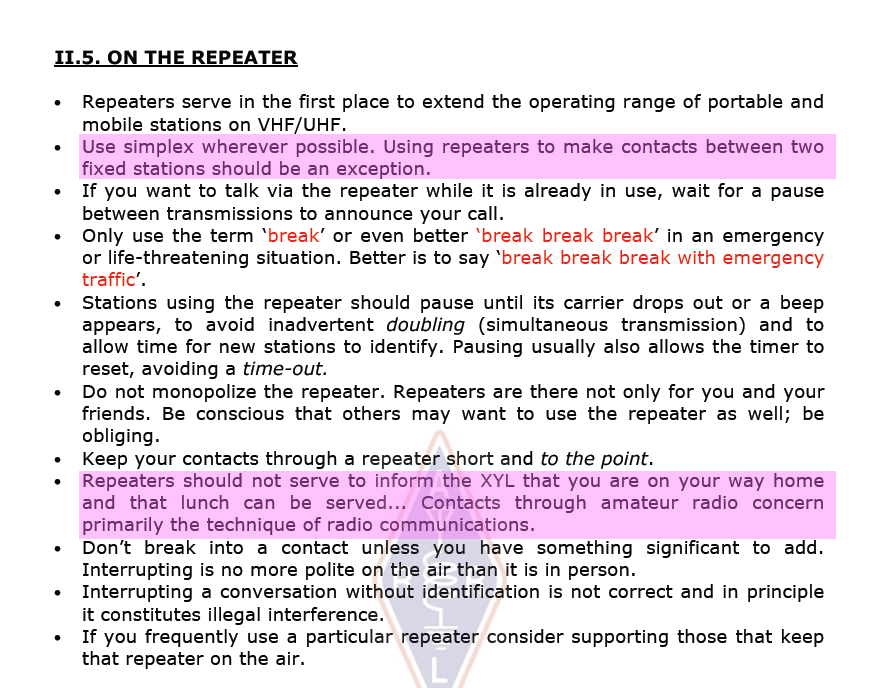As we head into the Fall/Winter season, RAWNY is once again providing licensing classes for those who wish to become either a new ham as a Technician, or upgrade from a Technician to a General class amateur radio operator. Getting that General ticket opens up a entirely new aspect of the hobby. For the first time, you’ll be able to take advantage of frequencies on the HF bands that were previously unavailable to you. You’ll experience new modes and other technologies that you simply couldn’t take part in as a Technician.
It is our goal to provide you with the best instructions you’ll need to pass your licensing exam. However, we also want to make sure you are kept aware of any additional information that will help to ensure you are following the rules and proper etiquette procedures concerning amatuer radio.
For those of you joining the ranks as a radio amateur for the first time as a Technician, or for those who are upgrading, the easiest and most convenient method of getting into amateur radio has been picking up an inexpensive HT and operating on the VHF/UHF frequencies we know as “2-meters and 440.”
Operating on a repeater is the easiest and most convenient method of communication we have at our disposal when we are using our HTs, or driving around in our cars with a mobile rig installed. However, keep in mind that there are recommended rules concerning a repeater that every amateur is asked to follow. Below is an excerpt from the “Ethics and Operating Procedures for the Radio Amatuer” document that was published earlier on the W2PE website. 
Keep in mind that a repeater, by its very nature, can be heard for many miles and is easily received by any HT, mobile rig, or scanner that is tuned in to its output frequency. Anything you say on the repeater will be heard by anyone who is listening. Therefore, if you put on the air unnecessary health/medicine information, employment information, recent purchase information, or whether or not you’ll be on vacation leaving your home alone, you potentially put yourself and your property in harm’s way should someone with bad intentions hears you, looks up your call, and thus finds your address.
In the interests of following “best-practices”, establish contact with a friend or family member on the repeater, then move off to a simplex frequency and continue your conversation there. This not only frees up the repeater for other use, but it makes it all the harder for someone listening to follow the conversation. Keep in mind that establishing a simplex frequency may not be the easiest thing to do if you and your friend are many miles apart and operating on HTs. Since VHF/UHF communications rely on something we call “line-of-sight”, you may not get that “full-quieting” signal report you’d find by talking on a repeater. However, moving OFF the repeater will ensure that anything you may accidentally say about your personal business will not be heard by a large audience. It also keeps the repeater free from unnecessary traffic should there be an emergency or other type of activity that depends on the repeater for the best method of communication.
If you are unable to establish communications on a simplex frequency, then you need to stop and ask yourself if what you are about to say on the air (repeater) is something you want the entire world to hear. If not, then it’s best to continue that type of conversation on a phone call.
The following document outlines the 2-meter band plan as adopted by the ARRL. Contained in this document is an extensive list of simplex frequencies that may be used to carry out a conversation off a repeater. This document will also show you what other types of activity may be found on the 2-meter band.
2-Meter-Band Plan (pdf)
Finally, operating on the 440 band has its own set of challenges. The following link to a sub-section on the “Ham Radio School” website will help to guide you on choosing a correct operating frequency on the 440 band as the same rules should apply: make initial contact on a repeater, then move off to a simplex frequency whenever possible.
What Frequency Do I Use on 70 Centimeters?
Operating on the VHF/UHF bands is a major part of the amateur radio experience. Here’s hoping that you’ll continue to do so safely and efficiently.
